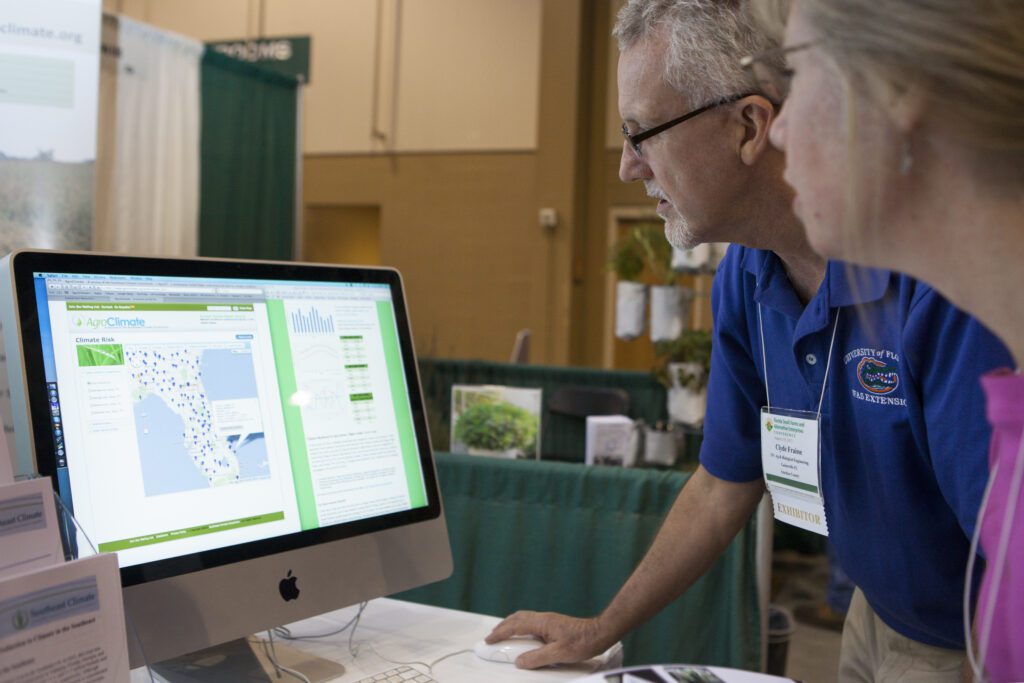Growers Looking to Diversify with Alternative Crops
Some small farmers are looking to hydroponics to meet increased demand in direct-to-consumer markets. At this summer’s Florida Small Farms and Alternative Enterprises Conference, hydroponics was a hot topic. “People can do it on a small scale and they don’t have to dig up their whole yard,” explains Wanda Laughlin, a hydroponics class speaker, who works as Hydroponic Greenhouse Manager at Suwanee Valley Agricultural Extension Center.[emember_protected custom_msg=”Click here and register now to read the rest of the article!”]
Interest in hydroponics has been fueled by consumers’ concern about where—and how—their food is grown. Small farms, especially in urban areas, have been meeting that need with direct sales. “They want some lettuce. They want some tomatoes . . . They want a mixture of stuff,” says Bob Hochmuth, a conference organizer who coordinates hydroponics training statewide through the Suwanee center. “The farmers are looking at diversity—a few key crops, rather than being a commodity grower.”
Among them, leafy greens including lettuce, spinach, swiss chard, mustard and kale are popular and easier to grow. “Without a doubt, it [the produce] is fresher. They get to know the farmer,” Hochmuth says. “That relationship between the customers and the farmer is very important.”
The conference drew approximately 650 to a variety of pre-conference tours, educational sessions and exhibits. Held during August in Kissimmee by University of Florida and Florida A&M University, the event featured 69 speakers and moderators, plus 72 exhibits.
Among the highlights were a Fruit and Vegetable Tour to the Land Pavilion at Disney’s Epcot, which introduces farmers to hydroponics, and Long and Scott Farms, a 1,200-acre vegetable farm known for its annual fall corn maze. An Aquaponic program taught about using freshwater fish in a polyculture.
The conference also was a wake-up call for famers who might think they’re exempt from the Food Safety Modernization Act adopted in 2010. “It’s highly unlikely there will be farms of any size that won’t have to do anything,” Hochmuth says, adding implementation is delayed until “well after November.”
Feedback is being sought through the U.S. Food and Drug Administration. Two main concerns center around the amount of documentation and the cost of a third-party audit of safety practices, he says.
Conference visitors came from throughout the southeastern United States. “Florida is taking the reins when it comes to small farmer alternative enterprises. We do get a lot of people from the South,” Laughlin says.
Networking is a big benefit. “Networking with other small farmers, extension agents, and industry professionals is one of the most beneficial aspects of this conference for small farmers,” says Lynn Max, an event spokeswoman. “Many attendees left the conference with plans to start a new farm, make changes and/or improvements on their existing farms, or plans to expand their farms with new products.”
The conference included livestock demonstrations and sessions on topics like “Using Social Networking and the Internet to Market Your Product,” “Seed Saving, Production and Availability,” and “Blackberry Production.” Workshops also were held on irrigation management, beekeeping, pasture-raised pork, and diagnosing insects and diseases on vegetables.
“We had a full room,” says Mary Beth Henry, a speaker at “Vegetable Diagnostics 101: Insects and Diseases” and a Polk County extension agent. “I think people really appreciate the interactivity of it.”
To view and/or download presentation materials, visit http://conference.ifas.ufl.edu/SmallFarms/details.html.
CREDITS
story by CHERYL ROGERS
[/emember_protected]

